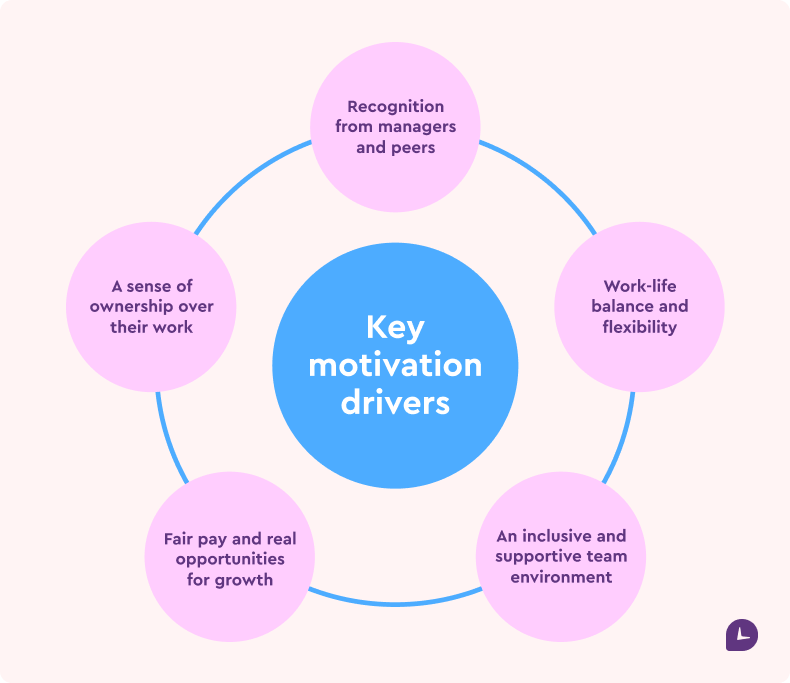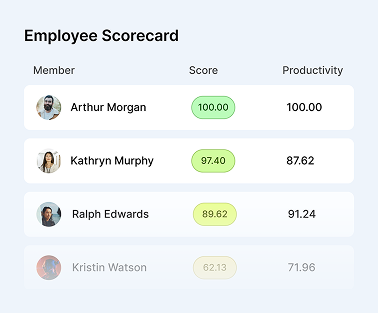Effective Employee Management in the Workplace

Effective employee management is the foundation of a healthy and scalable organization. Whether a team works remotely, in a hybrid arrangement, or in a traditional office, the quality of management shapes performance, motivation, retention, and culture.
Strong leadership requires more than assigning tasks. It relies on clear communication, trust, and people-focused systems that help employees feel supported and accountable. When these elements are present, teams stay engaged and grow with confidence. When they are missing, productivity declines, and burnout becomes common.
This article explores the core principles of effective employee management, the habits that help teams succeed, and the role of technology in supporting managers without replacing the human side of leadership.
Foundations of Employee Management
Effective management starts with clarity. Employees perform better when they understand their responsibilities, how their work supports company goals, and what success looks like. Clear roles, steady workflows, and simple communication channels help prevent confusion and reduce mistakes.
Good management also requires an understanding of basic human needs. People want autonomy, fairness, and a sense of belonging. They need to feel safe raising questions or sharing ideas. When this safety exists, teams collaborate more easily and avoid unnecessary conflict.
Trust and consistency connect these elements. Employees respond best to managers who communicate clearly and act reliably. When expectations and behavior stay steady, employees experience less stress and can focus on doing their work well.
The Importance of Strong Communication
Communication shapes nearly every part of the employee experience. When managers communicate clearly, teams stay aligned, misunderstandings decrease, and employees feel more confident in their work.
Regular one-on-one meetings give employees a dependable space to ask questions, share challenges, and receive guidance. Without these conversations, small issues can grow. Frequent check-ins also help employees stay focused on the right priorities.
Constructive feedback is another essential part of strong communication. It works best when it is specific and based on real examples, which makes it easier for employees to understand and act on.
Good communication also boosts morale. When employees feel heard, engagement rises, especially in remote or hybrid settings where casual interactions are limited. Managers who listen well and show empathy build trust and help teams stay connected.

Employee Development and Continuous Learning
Professional growth is a major driver of long-term employee engagement. When companies invest in training, they build stronger skills and increase loyalty. Learning can come through courses, workshops, mentorship, or hands-on projects that build real experience.
Development works best when it connects to clear career paths. Employees want to understand their direction and the skills they need to advance. This clarity helps them set goals and stay motivated.
As technology evolves, many roles require updated skills. Training helps employees stay confident and prepared. When companies support continuous learning, employees feel valued and are more likely to stay with the organization.
Keeping Employees Engaged and Motivated
Motivation grows from consistency, fairness, and recognition. Employees are more engaged when they feel trusted and when their contributions are noticed. Acknowledgment can be as simple as appreciating someone’s effort during a team meeting or sending a quick message that recognizes strong work.
Key drivers of motivation include:
✅ A sense of ownership over their work
✅ Recognition from managers and peers
✅ Fair pay and real opportunities for growth
✅ Work-life balance and flexibility
✅ An inclusive and supportive team environment
Organizations that focus on these factors tend to have lower turnover and stronger teamwork. Motivation also increases when employees understand the impact of their work. When managers explain how a project or task supports broader goals, employees feel connected to the mission of the company.

Performance Management That Builds Results
Performance management is most effective when it happens continuously. Annual reviews have value, but employees also need regular guidance and managers need real-time insight into progress. Ongoing conversations help solve problems early, reinforce good habits, and reduce the stress of once-a-year evaluations.
Focusing on results instead of constant oversight creates healthier work relationships. This approach is especially important for remote and hybrid teams, where trust and autonomy influence performance. When employees feel trusted, they take more initiative and deliver stronger outcomes.
Technology can support performance management by highlighting trends and workload issues. Tools that track projects and productivity give managers useful insights, but they should guide decisions rather than control employees. Personal understanding still matters.
High performers also need attention. They benefit from recognition, new challenges, and clear opportunities to grow. Supporting them helps keep strong talent in the organization.
The Role of Employee Monitoring Software
Employee monitoring software has become more common as remote work has grown. When used responsibly, these tools offer insight into productivity trends, timelines, and work patterns. They help managers understand workloads and identify areas where employees may need assistance.
Transparency is important. Employees should know what data is collected, why it is collected, and how it benefits them. Clear explanations build trust and prevent misunderstandings. Ethical use can reduce micromanagement because managers rely on data instead of guesswork. Poor use can damage morale and create an atmosphere of suspicion.
Monitoring tools should support leadership practices rather than replace them. A healthy balance between data and personal connection creates a more effective system overall.

Managing Remote and Hybrid Teams
Remote work requires clearer communication and more frequent updates. Managers need to set expectations, support self-management, and focus on results instead of hours worked. Employees perform best when they have flexibility and clear goals.
Trust is essential. Without it, managers may over-monitor, which hurts morale. With trust, employees feel confident and work more independently.
Technology helps remote teams stay organized through collaboration platforms and communication tools. Even with these systems, managers must create intentional moments of connection. Regular check-ins, open discussions, and team activities help reduce isolation and keep everyone aligned.
Conflict Resolution and Workplace Harmony
Conflicts can occur even in well-functioning teams. Managers should watch for early signs such as tension, short responses, or changes in behavior. Addressing concerns early prevents them from escalating.
Effective conflict resolution requires understanding each perspective and identifying the underlying issue rather than reacting only to the surface problem. A manager might find that a disagreement about deadlines is really a concern about workload or unclear expectations. Solving the deeper issue leads to lasting solutions.
A workplace built on respect and fairness experiences fewer conflicts and resolves them more easily. This stability strengthens team relationships and supports long-term success.

Leadership Styles That Improve Employee Management
Leadership style influences how employees feel and work:
✅ Servant leadership builds trust through support and humility.
✅ Transformational leadership motivates people through vision.
✅ Situational leadership adjusts guidance depending on the needs and experience level of each employee.
Great managers shift styles based on context. Flexibility and emotional intelligence create stronger team dynamics and improve performance across a wide range of situations.
Technology and Automation in Management
Technology helps managers by reducing manual tasks and centralizing information. HR systems improve onboarding, attendance tracking, and compliance. Automation frees time for managers to focus on coaching and support. AI tools can highlight patterns, predict potential problems, and suggest improvements.
Balance is important. Too much reliance on automation can make the workplace feel rigid. Technology should enhance the employee experience, not replace human interaction.
Measuring Management Success
The effectiveness of management can be measured through both performance data and employee feedback. Engagement scores, retention rates, productivity trends, and project completion timelines offer a clear picture of organizational health. Pulse surveys help managers understand sentiment and spot concerns early.
Common KPIs for evaluating management effectiveness include:
✅ Employee engagement and satisfaction
✅ Retention and turnover rates
✅ Productivity and project metrics
✅ Participation in training and skill development
✅ Quality and consistency of communication
Monitoring these indicators allows companies to adjust their approach and support healthier, more productive teams.
Maximize productivity of your business
Track performance and streamline teamwork
Conclusion: Effective Employee Management
Effective employee management is a blend of communication, leadership, development, trust, and thoughtful use of technology. Managers must stay adaptable and empathetic while also relying on data to guide decisions. Employees thrive in environments where expectations are clear and where their growth and contributions are recognized.
Organizations that invest in strong management practices attract better talent, build resilient teams, and create workplaces where people feel motivated and committed to long-term success.
With the right systems, habits, and tools in place, companies can support a workforce that is both high performing and genuinely engaged.
– The Monitask Team
FAQ: Employee Management in the Workplace
How can managers keep remote teams engaged?
Set clear goals, hold regular check-ins, and create space for open conversation. Trust and consistent communication help remote employees stay aligned.
Do employee monitoring tools improve performance?
They can, as long as they are used transparently and ethically. Monitoring should inform decisions, not replace trust or personal leadership.



